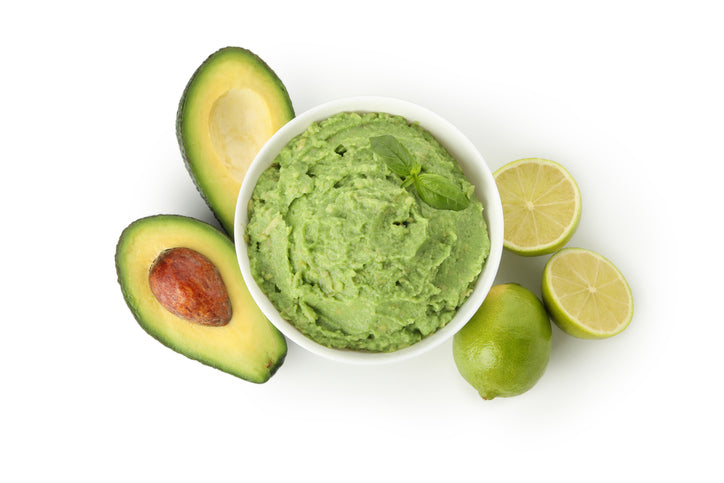by Dr. Michael Donaldson, PhD
In the webinar, “Melatonin: Beyond the Sleep Aid” Michael Donaldson updated the audience on research findings that might just put melatonin on your “must-have” supplement list. After all, there are few molecules that are so inexpensive that have so much benefit.
Donaldson pointed out that while melatonin has been sold as a sleep aid to promote optimal sleep, we have known that melatonin plays a role in cancer for many years; we included it in our cancer protocol at the Oasis of Hope Hospital 20 years ago. Randomized controlled trials of melatonin with a total of 2,000 advanced cancer patients in the 1990s and early 2000s also showed that melatonin increased survival time, decreased traditional cancer treatment toxicity and gave the patients better quality of life. And it turns out that they didn’t even do optimal dosing, as we shall see below.
It all has to do with the Warburg Effect, which Otto Warburg noticed in the 1960s in cancer cells. Instead of going through the slower, more efficient metabolic pathway of oxidative phosphorylation cancer cells use the fermentative metabolism. While Dr. Warburg didn’t know all the reasons for this shift, further research has revealed that the fermentative metabolism of glucose to lactic acid is faster and generates more energy quickly, allows the cells to take up more lipids (to build membranes for rapid cell growth) and also generates a lot of 5-carbon sugars via the pentose phosphate pathway (to generate more DNA and RNA for cell division and growth).
Donaldson highlighted two experiments that show the effect of melatonin on the Warburg Effect. In the first experiment mice were implanted with human tumors. The control group had a 12-hour light/dark cycle, while the experimental group had dim light at night as well as full light in the daytime. The control mice produced melatonin in the dark, but the melatonin synthesis was blunted by the dim light at night in the control mice. The metabolic result was that the control mice shifted to normal metabolism without the Warburg Effect at night, but the mice exposed to light at night continued with the Warburg Effect all day and all night. The control mice slowed down glucose, fatty acid, and DNA precursor uptake at night, while mice exposed to light at night never slowed down at all, with their tumors growing much faster than the control group. Light at night was literally cancer promoting.
In the second experiment human tumors were grafted into rats. The tumors were perfused with blood with or without melatonin in it. Again, the rats exposed to melatonin decreased their metabolic activity at night, while the rats without melatonin kept on growing at breakneck speed. When a molecule which blocks the melatonin receptor was added to the rats exposed to melatonin the effect of melatonin was also blocked, indicating that the result was specific to melatonin.
What does this all mean? Cancer cells, especially solid tumors, are normal about half of the time in the dark. Melatonin produced by the pineal gland will turn off the Warburg Effect and make cancer cells become normal during the night. Also, light at night is a disease-causing factor and should be avoided.
During the daytime it turns out that normal cells produce melatonin in the mitochondria for intracellular use as a signaling molecule and antioxidant within the mitochondria. Cancer cells do not produce melatonin in their mitochondria for one reason or another. At the present time it appears to be a chicken-and-egg conundrum. Which comes first? The cancer or the lack of melatonin? Melatonin and cancer appear to be quite exclusive of one another.
Donaldson also pointed out that the Warburg Effect goes beyond just cancer. Research by Dr. Russell Reiter and his team has shown the Warburg Effect and the reversal of other diseases by melatonin. The list includes neurological diseases like multiple sclerosis, Alzheimer’s Disease, ALS, Parkinson disease, and metabolic diseases like diabetic kidney disease, glaucoma, pulmonary hypertension, and atherosclerosis, and infectious diseases like septic shock, herpes, viral infected hepatocytes, HIV/AIDS and SARS-CoV-2 infection. Indeed, melatonin’s effect go way beyond a decent sleep aid. Melatonin’s effects on so many disease processes might be due to its ability to reverse the Warburg Effect.
So, what does this mean for you? If you are dealing with cancer, or any of these other diseases mentioned here, you might want to consider optimizing your metabolism with melatonin. Healthy people under the age of 50 not exposed to light at night, and some older healthy people produce melatonin reliably. However, if you are fighting a chronic life-threatening disease, it is safe to assume that you aren’t one of those fortunate people.
It turns out that 10 to 20 mg at night is more than plenty to reinforce the body’s production of melatonin at night. Melatonin is very safe and doesn’t even have an LD50 because it is so non-toxic. It is not habit forming or addictive and doesn’t stop the body’s normal production of melatonin.
But what about during the daytime when cancer cells are under the Warburg Effect? Dr. Donaldson pointed out that this research supports the use of micro-doses of melatonin during the day to keep the Warburg Effect away. Using a liquid melatonin, doses as low as 75 to 150 microgram can be easily achieved. This could be used every 3 to 4 hours during the day to maintain exposure of the body to enough melatonin to keep cellular metabolism in the normal, non-fermentative mode. This could be extremely helpful for people dealing with solid tumors and diseases that utilize the Warburg Effect. Melatonin is widely available. You may want to listen to the full webinar for more details, or check out the references included below for a deeper dive into the melatonin literature. This is information that you can definitely use today. You can access the webinar at Melatonin: Beyond the Sleep Aid Webinar (myhdiet.com)
References:
1. Mao L, Dauchy RT, Blask DE, Dauchy EM, Slakey LM, Brimer S, et al (2016) Melatonin suppression of aerobic glycolysis (Warburg effect), survival signaling and metastasis in human leiomyosarcoma. J Pineal Res 60:167–177. doi: 10.1111/jpi.12298
2. Blask DE, Dauchy RT, Dauchy EM, Mao L, Hill SM, Greene MW, et al (2014) Light Exposure at Night Disrupts Host/Cancer Circadian Regulatory Dynamics: Impact on the Warburg Effect, Lipid Signaling and Tumor Growth Prevention. PLOS ONE 9:e102776. doi: 10.1371/journal.pone.0102776
3. Reiter RJ, Sharma R, Rosales-Corral S (2021) Anti-Warburg Effect of Melatonin: A Proposed Mechanism to Explain its Inhibition of Multiple Diseases. Int J Mol Sci 22:. doi: 10.3390/ijms22020764








